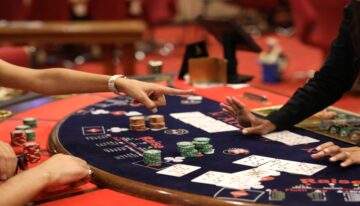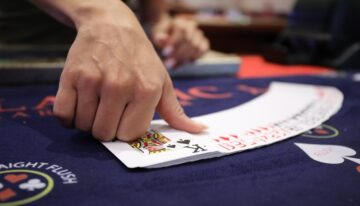
No matter how customer-friendly they want to be, casinos are out there to make money. And the average casino game will therefore by design favor the casino. But by how much? This is the dreaded house edge that is so crucial for your bankroll management. Needless to say, different casino games have different house edges. Generally speaking, ‘easy’ games like slots that attract customers by the dozens will have a very high house edge. Craps and slot games, for example, have a house edge as high as 15%. But blackjack is actually an exception to this norm. It is easy to get into, and yet it only has roughly 0.5% house edge. That is almost as low as 0.46% in video poker. But there is, of course, a catch.
The house edge is not a static number, neither does it represent your likeliness to win in every single game. The house edge of blackjack will actually go up or down depending on how good of a player you are. And if you are indeed good enough, you could technically make a living out of it.
The Playing Rules of Blackjack
Before we start talking about utilizing your hands to the best of their abilities, let us pore over the rules of blackjack – which, in truth, should not take long. Each round, the dealer will deal two cards face up to all the players. However, he will deal only one card face-up and the other card face-down to himself. After that, you as a player can take additional cards from the shoe, or just stand with your current hand. The dealer then takes the final card, factoring in some additional rules. The goal, simply put, is to score higher than the dealer with your hand at the end of the round. Without going over 21, that is. If you or the dealer go over 21, you go bust, and lose the round. So the rules – as you can see – are rather simple.
In fact, it almost feels like there is not much you can do than motion for more cards, or stay with your initial card, on the basis of your hunch. The rest seems up to a game of luck. But there is actually much, much more to blackjack than just dumb luck. There are core strategies you can stick to, and there are external ‘skills’ like card counting to give you an edge. But other than that, the very house rules of blackjack do allow you to change your hand significantly. The aim of this article is to talk about those techniques to manipulate your hand and improve your chances, all of it by the books.
When Should You Stand?
The basic form of gameplay in blackjack for you comes down to this decision. To clarify in brief: each face card has a value of 10, numeric cards have their numeric values, and the ace can either be 1 or 11. The big question then remains whether to ask for a third card or not. Your game plan will hinge on that decision alone. Of course, there is always the benefit of a higher score when you hit. You are trying to beat the dealer after all. But there is also the inherent risk of going bust.
With that in mind, here are some general points of note you should remember. Firstly, you should always hit if your total is 8 or less. There are a number of cards of values over 9, so it is very likely for you to hit a handsome score of ~18. Now, note that it is always better to score close to 21 even if the dealer does not show high cards. If the dealer scores under 17, he will take an additional card and have a high score anyway. On the other hand, always stand when you are at 17 or above too. The chances of you going bust get much higher when you hit that mark. Finally, understand that there is a good deal of difference between a ‘hard’ 16 and a ‘soft’ 16.
A soft hand is much more flexible thanks to the duality of ace, and you can generally form safer, stronger hands if you hit on a soft hand. On the other hand, a hard 17 or 16 means you are much better off standing – especially if the dealer shows an initial hand less than 6.
Splitting
When you get two identical cards in blackjack, you have the option to form two equal hands that you can grow separately. But it’s not a good tactic to always split. How can you tell when not to split? Generally, the question is whether your hand would be stronger as one. To exemplify, you should always split aces, 4s, 5s, or 8s. But you should not split two 9s or 10s – because 18 and 20 are already two very strong hands.
All of this may seem too complex for a casual game of blackjack for some. But you do not actually need to calculate it all by yourself all the time. There are plenty of basic blackjack strategy tables that give you an idea of when to split, hit, or stand. They are especially a godsend when you are playing online.
Play blackjack on JeetWin and get a chance to win exciting prizes! Register now!










